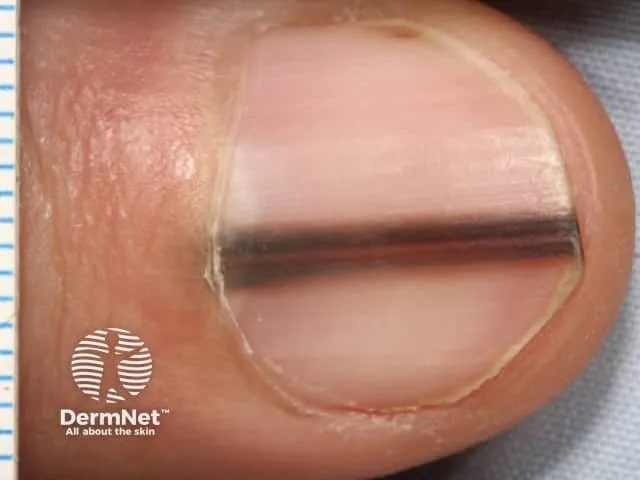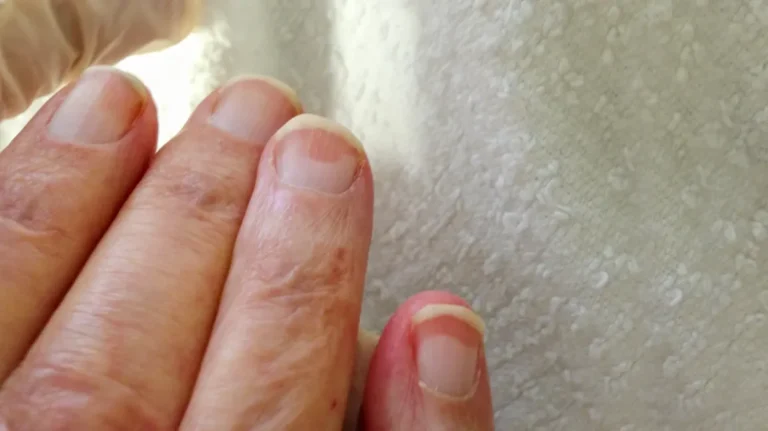7 Health Conditions You Can Detect by Examining Your Nails
Your nails can reveal a great deal about your health. Changes in their color, shape, or texture can sometimes be early indicators of underlying medical conditions. While minor issues such as brittle or discolored nails are often harmless and may result from injuries, dampness, poor nutrition, or aging, some changes warrant closer attention. Below are seven health conditions that may be detected by simply checking your nails:
1. Beau’s Lines
Beau’s lines are deep, horizontal grooves that run across the nail plate. These ridges often result from a temporary halt in nail growth due to severe illness, infection, or stress on the body. For example, some people developed Beau’s lines following a COVID-19 infection. A severe form, called onychomadesis, occurs when the nail stops growing entirely, leading to gaps in the nail. Common causes include chemotherapy, high fevers, and zinc or calcium deficiencies.
While Beau’s lines may not always indicate serious health problems, recurring instances should be discussed with a healthcare provider to rule out systemic issues.

2. Clubbing
Clubbing occurs when nails curve downward, and the fingertips become swollen and bulbous. This change often develops gradually and may be linked to serious health conditions such as heart disease, lung disease, or congenital cyanotic heart disease. Red or purple lines under the nails, which might resemble injuries, could also signal cardiovascular issues. If you notice clubbing or accompanying symptoms like fatigue, swollen ankles, or chest pain, seek medical advice promptly.

3. Spooning
Spoon-shaped nails, or koilonychia, curve inward and may indicate iron-deficiency anemia. This condition often arises from poor nutrition, celiac disease, digestive issues, or pregnancy. Symptoms of anemia include fatigue, pale skin, headaches, and shortness of breath. If you suspect anemia, consult a doctor for a blood test. Iron deficiency is typically treatable with iron supplements and an iron-rich diet.

4. Pitting or Denting
Small dents or pits on the nail surface are commonly associated with skin conditions such as psoriasis, eczema, and alopecia areata. These conditions often present with additional symptoms like scaly patches (psoriasis), dry and itchy skin (eczema), or patchy hair loss (alopecia areata). While mild cases of pitting may not require treatment, a dermatologist can provide tailored care, including corticosteroids or vitamin D3 treatments for underlying conditions.

5. Melanoma
Dark streaks or lines running down the nail could be a sign of melanoma, the most serious form of skin cancer. While not all dark streaks are cancerous, it is crucial to have them evaluated by a dermatologist. Early detection can significantly improve treatment outcomes.

6. Terry’s Nails
Terry’s nails describe a condition where over two-thirds of the nail bed turns white, leaving only a narrow pink or red strip at the tip. This symptom can indicate liver disease, heart disease, diabetes, or natural aging. Other warning signs of liver disease include yellowing skin, fatigue, and loss of appetite. A doctor’s evaluation is essential to identify the cause.

7. Yellow Nails
Yellowing of the nails is often caused by fungal infections, which can thicken and crumble the nail. Although usually painless, persistent yellow nails may signal more serious conditions such as diabetes, thyroid disorders, psoriasis, or lung disease. Consult a doctor for diagnosis and treatment options if yellow nails are accompanied by other symptoms.

Final Thoughts
While nail changes can offer clues about your health, they are not always a cause for alarm. Factors like injuries, nutritional deficiencies, or aging often contribute to nail abnormalities. However, if changes persist, recur, or are accompanied by other symptoms such as fatigue, weight loss, or pain, consult a healthcare provider to rule out more serious conditions.